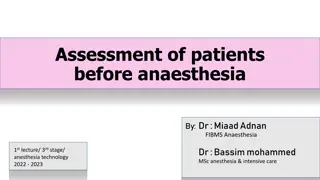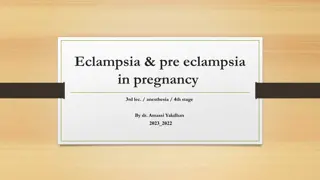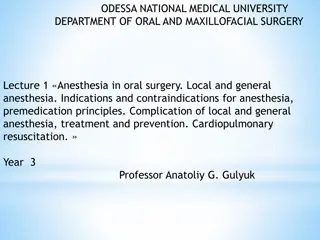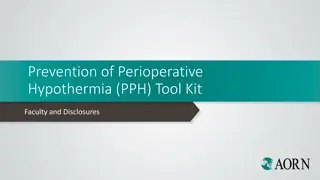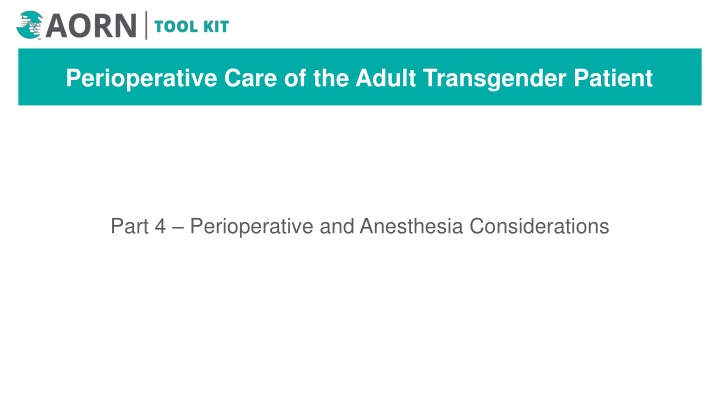
Perioperative Care of Adult Transgender Patients: Considerations and Education
Learn about perioperative and anesthesia considerations for adult transgender patients, including registration, surgical assessments, anesthesia effects, and urologic considerations. Education plays a crucial role in creating safe and welcoming healthcare experiences. References provided for in-depth reading.
Download Presentation

Please find below an Image/Link to download the presentation.
The content on the website is provided AS IS for your information and personal use only. It may not be sold, licensed, or shared on other websites without obtaining consent from the author. If you encounter any issues during the download, it is possible that the publisher has removed the file from their server.
You are allowed to download the files provided on this website for personal or commercial use, subject to the condition that they are used lawfully. All files are the property of their respective owners.
The content on the website is provided AS IS for your information and personal use only. It may not be sold, licensed, or shared on other websites without obtaining consent from the author.
E N D
Presentation Transcript
Perioperative Care of the Adult Transgender Patient Part 4 Perioperative and Anesthesia Considerations
Perioperative Considerations Registration and surgical assessment should capture information about gender identity. Coordinate between providers to prevent patients from having to repeatedly disclose information. Ensure only personnel who are providing direct care enter the room. Maintain privacy, dignity, and respect. Be aware of placement of transdermal hormone patches in relation to warming devices. Heat may lead to increased drug uptake. Pregnancy test considerations VTE prophylaxis heparin and sequential compression devices Chest binders preoperatively Room assignments Maintain privacy postoperatively
Anesthesia Considerations Physiological and psychological effects of both continuing and discontinuing hormone therapy need to be considered. Consult an endocrinologist Some facial procedures may indicate difficult airway management. Local anesthetics have been shown to result in increased amounts of free drug when high-dose estrogen therapy is utilized. Implement dose reduction or close monitoring for toxic effects. There is an increased risk for postoperative nausea and vomiting. There is a risk for prolonged muscle paralysis from succinylcholine. Neuromuscular monitoring is recommended Withholding spironolactone on the day of surgery is suggested to avoid volume depletion intraoperatively diuretic and antihypertensive. There are no documented anesthetic drug interactions with hormone therapy.
Urologic Considerations Q: Can I insert a Foley catheter for a patient with a history of gender- affirming surgery? A: Yes. Gender-affirming surgeries do not always pose a barrier to safe routine indwelling catheter insertion. However, as with any patient who has a history of urethral procedures, a thorough assessment of the patient history, risk factors, and physician recommendations is advised.
Education In a qualitative study, participants mentioned that collaborative health care professionals who were motivated to educate themselves made health care experiences feel safe and welcoming.
References for Part 4 Collister D, Saad N, Christie E, Ahmed S. Providing care for transgender persons with kidney disease: a narrative review. Can J Kidney Health Dis. 2021;8:2054358120985379. https://doi.org/10.1177/2054358120985379 Tollinche LE, Walters CB, Radix A, et al. The perioperative care of the transgender patient. Anesth Analg. 2018;127(2):359-366. https://doi.org/10.1213/ANE.0000000000003371












